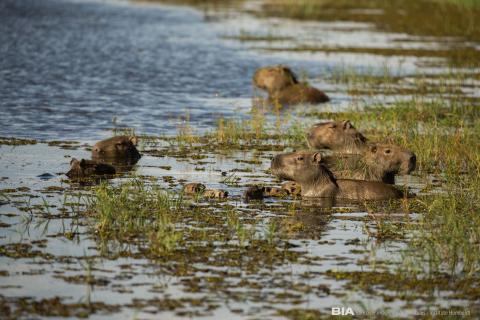Permanent wetlands
Permanent wetlands are those that contain bodies of water throughout the year, especially the lake and swamp complexes associated with the flood plains of the main rivers. It is estimated that they occupy approximately 4,154,524 hectares in Colombia, mainly in the Amazon basin, the swamp complex of the Momposina depression and the margins of the San Juan and Baudó rivers in the Pacific region.
Despite inventory efforts, research on permanent wetlands has focused mainly on the inventory of their biodiversity, especially in the case of fish. However, these studies only cover up to 20% of their geographic distribution and present important gaps in terms of their ecological functioning.
Permanent wetlands in Colombia offer various services to society, such as the supply of food, fresh water, raw materials and natural medicines, as well as climate and water regulation and water purification services. They also have an important cultural value for local communities, providing cultural identity, spiritual and recreational enjoyment.
Since 1998, Colombia has proposed 12 wetlands for designation as sites of international importance under the Ramsar Convention, with nine of them already recognized. Currently, Colombia has protected a total of 760,340 hectares by signing this convention. However, permanent wetlands in the Andean zone face significant threats, especially due to the impact of agricultural activities.
Source: Evaluación nacional de biodiversidad y servicios ecosistémicos de Colombia

